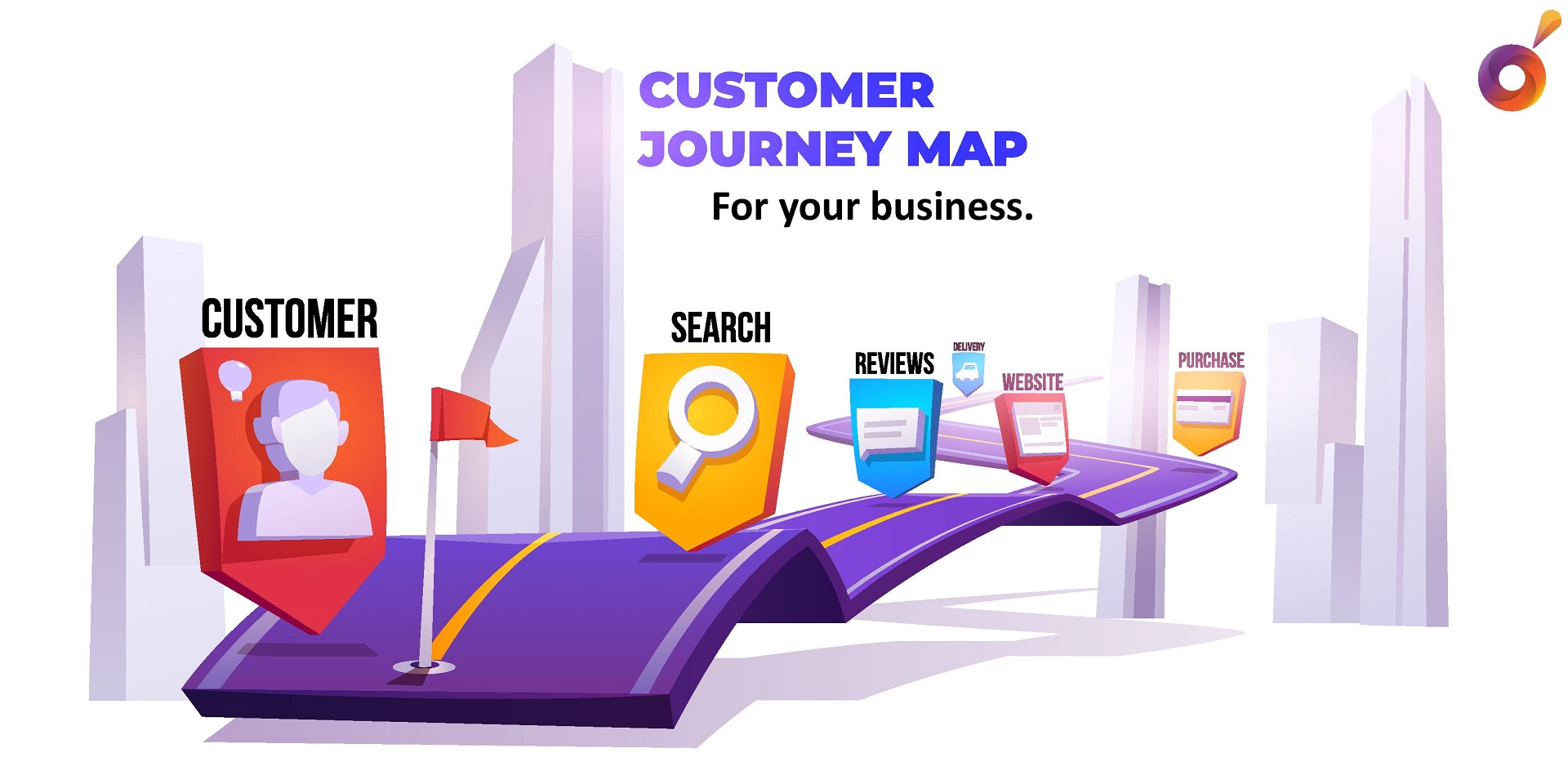
Chances are, you honestly believe that nobody on the planet knows your company better than you do — especially if you found it or run its marketing or sales department. It’s also likely that you’ve spent months, if not years, creating and refining statements that communicate who we are, what we do, why it matters, why it’s better, as well as a general understanding of who your target and secondary customers are and what they need from you.
Congratulations. If you can talk to a family member or neighbor about those things and no one walks away from the conversation with a puzzled look on their face, you’ve done a great job of explaining your business and its value proposition. But even if you think you possess that skillset, you’re most likely among most business owners who think they know their business and their customer better than anyone else.
Here’s the thing. Unless you thoroughly understand the journey that a prospective customer takes in order to become a one-time or returning customer, you actually know little about who you are, what you do, why it matters, and why it’s better.
Introducing Customer Journey Mapping
One way to truly know your business better — better than anyone else on the planet — is to plot and continually update your customer’s journey. Known as customer journey mapping, it’s where you track and describe all the experiences customers have as they encounter a service or the products your business offers. It takes into account not only what happens to them as they journey toward becoming a customer, but also their responses to their experiences along the way. This enables you to discover opportunities for understanding, improving, and innovating the customer experience. And this, in turn, improves the chance that each and every interaction with prospective and repeat customers is as successful as it can be. Of course, you must keep in mind that both you and the customer have a role to play in defining success.
And while customer journey mapping sounds simple enough, the process is fraught with multiple frustrations, including:
- Gaining access to data that represents reality
- Understanding format and scope
- Securing journey mapping skills and resources
- Obtaining buy-in from others at your company
So, what then are the specific benefits of committing to a journey management practice at your business? Well, creating and maintaining journey maps enable your business to do a number of things, including:
Shift to a customer-centric focus: Creating journey maps allows you to move beyond discussions about product and service features and into the realm of truly understanding your prospective customers’ objectives and expectations.
Create shared objectives throughout your business: When you understand your customer’s expectations and desired outcomes from engaging with your business or brand, you have an opportunity to express that information to everyone within your organization, explaining along the way what their exact role is in helping the customer achieve the best possible outcome for themselves, which also happens to be the best possible outcome for your business.
Identify and prioritize problems: Knowing which or how many obstacles customers must contend with when attempting to do business with you allows you to prioritize which problems to fix and in what order to address them.
Uncovering hidden truths: Most businesses operate with some level of delusion. Journey maps highlight circumstances that no one at your company ever considered or thought to address.
To be sure, engaging in an initial journey mapping exercise is hard work, but in this Factoreal blog post, we aim to simplify the process by helping you understand how to create a customer journey map for your business.
The Four Kinds of Journey Maps
Journey maps — the literal document that’s created by engaging in a journey map exercise — come in various shapes and sizes. The main distinguishing factors between them include:
- Relationship journeys: This type of journey map examines a customer’s relationship with your business over time.
- Emotional journeys: This type of journey map emphasizes the emotional journey of the customer.
- Discrete action journeys: This type of journey map focuses on revealing the discrete action customers take along the way toward becoming a customer.
- Task and behavior journeys: This type of journey map focuses on the behaviors that customers possess, and the tasks they take when becoming and remaining customers.
The Six or Seven Elements of Customer Journey Maps

In each of the journey map types listed above, the customer engages in at least six major experiences in a fairly common order:
- Awareness: Identifying their own needs
- Search: Research and discovery
- Evaluation: Comparison and choice reduction
- Purchase: Decision to purchase
- Usage: Implementation of a solution
- Maintenance: Service and support
And if you’re really good at helping the customer achieve success at each step along their journey, you’ll find that you can add a seventh experience to your company’s journey map:
- Advocacy: Renewal and referrals
How to Create a Customer Journey Map
While the best way to learn how to create a customer journey map maybe by taking a course online, attending a day-long workshop, or hiring someone with journey mapping experience to work with you and your team on creating one, here’s a crash course in creating customer journey maps on your own.
Step One — Gather your data
While you already know that customer journey maps come in all shapes and sizes, regardless of which map you create, you’ll need five elements in order to get started:
Personas: You can think of your customer personas as your businesses fictitious “everyman” — a profile of customers that represent specific target audiences showing interest in your products and services. For each customer persona, you would ideally have a unique journey map.
Scenarios: The specific journey that is being mapped is referred to as a scenario — a simple storyline that explains the customer’s objective and helps focus journey maps on specific sets of interactions along the way to becoming a customer. Typical scenarios include prospective customers who want to save money on a product or service they currently receive from a competitor. Or maybe a current customer who needs answers on how to use a product or service they recently acquired from your business.
Phases: In order to create a customer journey map, you have to know the phases your customers go through (i.e., the meaningful chunks of activities that, together, define the overall customer journey and all points of interaction). As mentioned above, phases may include awareness, search, evaluation, purchase, usage, maintenance, and advocacy. The most effective customer journey maps base and presents their phases at a high level of organization, based on real customer behaviors and data.
Actions, Mindsets, and Emotions: The behaviors and tasks your personas take throughout their journey — as well as what the personas think, experience, and feel throughout the journey — is what makes up this element of a typical customer journey map.
Insights: This element refers to the opportunities, ownership, and metrics displayed on the customer journey map itself. Areas, where there are possibilities to extend or enhance customer experience, would be considered opportunities. An assignment of who is in charge of the specific points within the customer’s journey is what ownership refers to. And measurements that ensure that a specific part of the journey is heightened is what metrics refer to.
As you can see, customer journey mapping involves having access to both quantitative data and the accurate interpretation of qualitative research. That means in order for you to create and maintain accurate customer journey maps, you have to engage in both statistical analysis and gathering, exploring, and interpreting anecdotal information. This is another reason why the creating of journey maps is easier said than done.
Journey mapping also requires the ability to accurately display the data you gathered in Step One. This leads us to the next step — design and visual presentation.
Step Two — Design and visual presentation
At the end of the day, everything you’ve learned about and collected is presented as a visualization of the series of interactions that a prospective or current customer has while attempting to accomplish a highly specific objective related to the products and/or services you sell. The visualization part requires that you have access to a graphic design and layout professional who knows how to accurately display the information you gathered in Step One.
For demonstration purposes only, a typical customer journey map might look similar to this:

Pro Tip: While it may appear that your customer journey map needs to adhere to a very specific format, we suggest that you not get hung up on format. We’ve been intentional about leaving this write-up’s sole customer journey map until now, and that’s because you have to be diligent about focusing first and foremost on the process and data required to create the map. If you choose to gather data based on a design that you like, you’ll be placing the cart before the horse, and that never works in marketing.
Customer journey maps work best when your organization has a shared vision for their end-use. Whether that’s crafting a shared point of view of your prospective and current customer’s needs and the prioritization of how you address them, or you’re interested in identifying and assigning ownership to important touchpoints to specific departments or staff members, customer journey maps work best when you put them to work.
And in order for them to work — regardless of the type of business you’re in — the monumental effort associated with adopting a customer journey practice will pay off if your effort is clearly defined ahead of time, focused on objectives that matter to your customers, is collaborative from the standpoint of who at your company is involved, and leads to actionable opportunities that produce results for which both you and your customer will have an appreciation.



